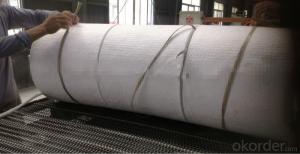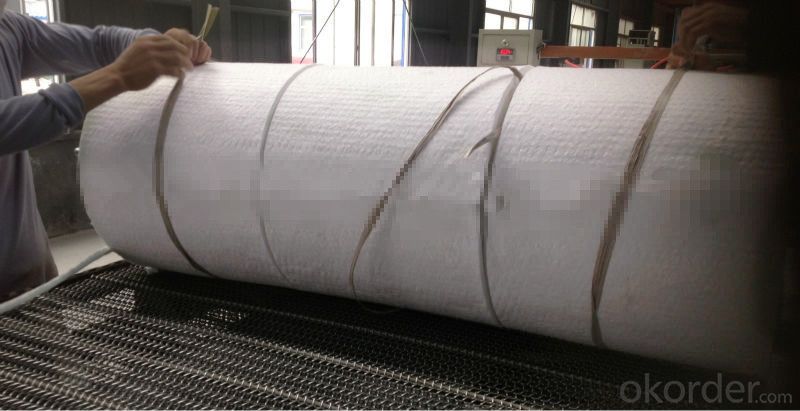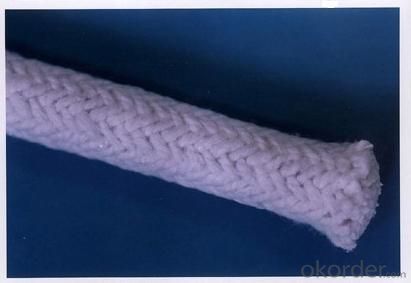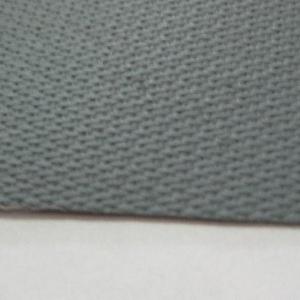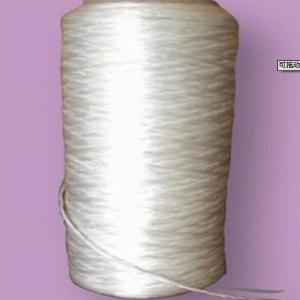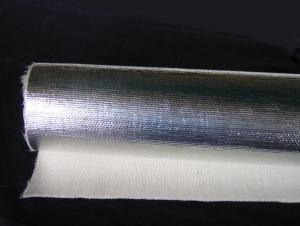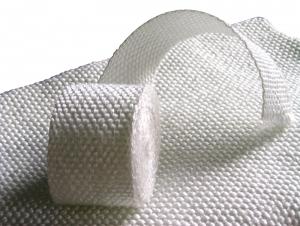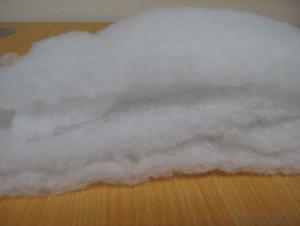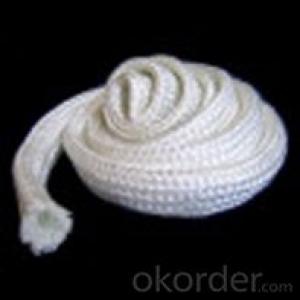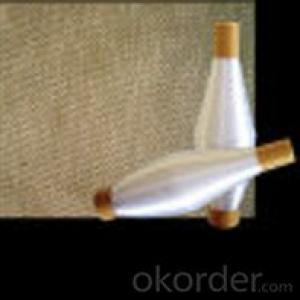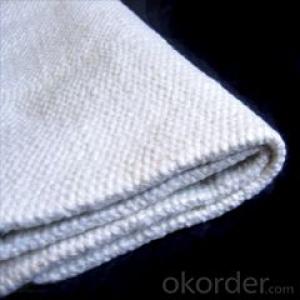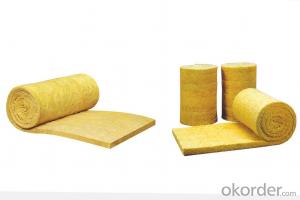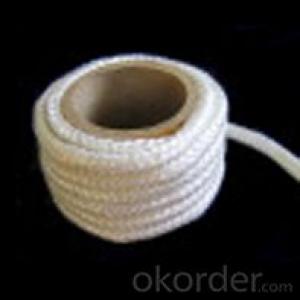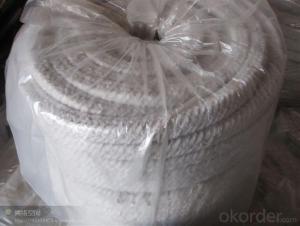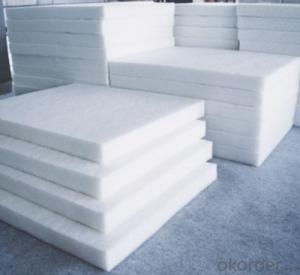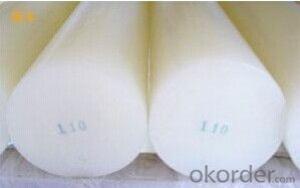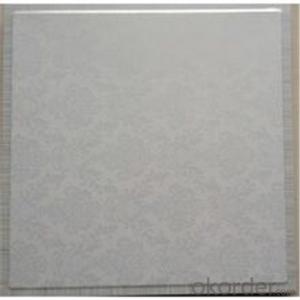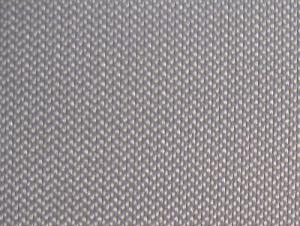Glass Fiber Textiles Ceramic Fiber Insulation Wool Rope
- Loading Port:
- Shanghai
- Payment Terms:
- TT OR LC
- Min Order Qty:
- 10 m.t.
- Supply Capability:
- 100 m.t./month
OKorder Service Pledge
OKorder Financial Service
You Might Also Like
Quick Details
| Application: | Refractory | Grade: | ST (Standard) | Working Temperature: | 1050C |
| Place of Origin: | China (Mainland) | Brand Name: | SUNTHERM | Model Number: | SS wire reinforced |
| Certificate: | BV,SGS,CE,ROHS,ISO9001:2000 | Sample: | Available | MDS Availabel: | Yes |
Packaging & Delivery
| Packaging Detail: | Woven bag , carton or as your demand to custom |
| Delivery Detail: | Within 15 days after received the deposit. |
Specifications
Ceramic fiber textile
AL2O3:45%
Fiber diameter:3-5um
Temperature:1050C ISO9000 certificate
ceramic fiber rope includes square braided rope, round braided rope and twisted rope. All are made from high quality ceramic fiber material. The rope is reinforced with fiberglass filament, or alloy steel wire. Fiberglass filament reinforced rope can work in the temperature below 650C with electric insulating property, while alloy steel wire can work in the temperature 1100C with higher strength. Ceramic fiber textiles (cloth, tape and rope) contain a certain amount of binder material which is normally burned at lower temperature and does not affect the insulation property .The three different styles are designed to fit different application needs: twisted rope is a soft rope, while square and round braid are more dense and solid.
Product information
Item | Ceramic fiber rope |
Type | Glass fiber strengthened ceramic fiber rope Steel wires strengthen ceramic fiber rope |
Applications | • High temperature static seal e.g. door joint or gaskets for flanges • Fire protection e.g. fires proof curtain against welding spark. • The protection of cable, fuel tubes etc • Fireproof twine, wrap, cover etc • Pipe or round duct insulation lagging • Asbestos substitute |
Features | •Excellent high temperature stability • Excellent tensile strength • Excellent thermal electrical insulation • Excellent chemical stability resistance • Low thermal conductivity. |
Packing | In plastic bags, in cartons or according customers requirement. |
Payment Terms | L/C, D/A, D/P, T/T, Western Union, MoneyGram, Cash. |
Delivery Time | Within 15 days after received the deposit. |
Certificate | ISO9001-2000, ISO14001-2000, CE ,SASO,SGS . |
Technical data
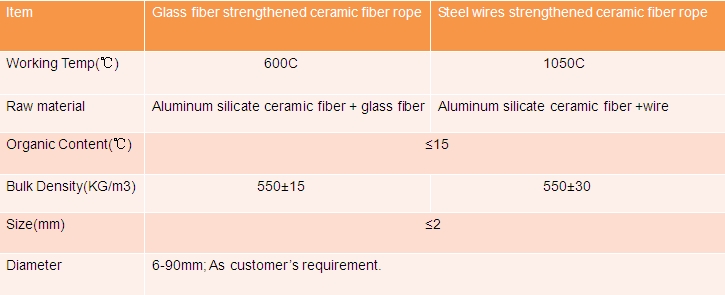
- Q: Can glass fiber textiles be used in reinforcement of natural fibers?
- Yes, glass fiber textiles can be used in the reinforcement of natural fibers. Glass fiber textiles are known for their high strength and stiffness, while natural fibers such as jute or sisal are valued for their low cost and eco-friendliness. By combining these two types of fibers, the resulting composite material can benefit from the best qualities of both. The glass fiber textiles can provide increased strength and durability to the natural fibers, making them suitable for applications that require higher performance and structural integrity. This combination of fibers can be particularly useful in industries such as automotive, aerospace, construction, and sports equipment manufacturing, where lightweight and strong materials are essential. Additionally, the use of glass fiber textiles can also help to enhance the fire resistance and dimensional stability of natural fibers, further expanding their potential applications.
- Q: Can glass fiber textiles be used in reinforcement of plastics?
- Yes, glass fiber textiles can be used as reinforcement in plastics. Glass fibers are lightweight, strong, and provide excellent stiffness and impact resistance to plastics when incorporated into their matrix. This combination enhances the mechanical properties of plastics, making them suitable for various applications such as automotive parts, construction materials, and consumer goods.
- Q: Can glass fiber textile be used in roofing materials?
- Yes, glass fiber textile can be used in roofing materials. It is commonly used as a reinforcement material in roofing products such as shingles, tiles, and membranes, providing strength, flexibility, and durability to the roofing system. Additionally, glass fiber textiles are resistant to corrosion, weathering, and UV radiation, making them suitable for long-term use in various roofing applications.
- Q: How do glass fiber textiles resist mildew?
- Glass fiber textiles resist mildew due to their non-porous and moisture-resistant nature. Unlike organic materials, such as cotton or wool, glass fibers do not provide a suitable environment for mildew to grow as they do not absorb or retain moisture. Additionally, glass fibers are also resistant to mold and fungi growth, making them an excellent choice for applications where mildew prevention is crucial, such as in humid or damp environments.
- Q: Can glass fiber textiles be used in electronic components?
- Yes, glass fiber textiles can be used in electronic components. Glass fiber textiles are known for their high strength, durability, and excellent thermal and electrical insulation properties. These characteristics make them suitable for various applications in the electronics industry. Glass fiber textiles can be used as reinforcement materials in printed circuit boards (PCBs), providing mechanical stability and enhancing the overall performance of the PCB. They can also be used as insulation materials for electrical wires and cables, protecting them from external influences and improving their safety and reliability. Additionally, glass fiber textiles can be used as substrates for flexible electronic devices, such as flexible displays or wearable sensors, due to their flexibility and lightweight nature. Overall, glass fiber textiles offer numerous advantages for electronic components and are widely used in the industry.
- Q: Can glass fiber textiles be used for making insulation boards or panels?
- Yes, glass fiber textiles can be used for making insulation boards or panels. Glass fiber textiles, also known as fiberglass, have excellent insulating properties due to their low thermal conductivity. They are widely used in the construction industry for thermal insulation applications. Glass fiber insulation boards or panels are lightweight, durable, and resistant to moisture, making them ideal for insulating walls, roofs, and floors. The fiberglass material can be easily molded into different shapes and sizes to fit various architectural designs and requirements. Additionally, glass fiber textiles are non-combustible, providing an added safety benefit. Overall, glass fiber textiles are a popular choice for insulation boards or panels due to their insulation efficiency, versatility, and durability.
- Q: How do glass fiber textiles affect privacy?
- Glass fiber textiles can significantly enhance privacy by acting as a barrier that obstructs visibility. These textiles have the ability to obscure views and prevent outsiders from seeing through windows or partitions, thereby increasing privacy in various settings such as homes, offices, or public spaces.
- Q: Can glass fiber textile be used in protective clothing?
- Yes, glass fiber textile can be used in protective clothing. Glass fiber textiles have high strength and heat resistance properties, making them suitable for protective clothing applications where protection against heat, fire, and chemical hazards is required. Additionally, glass fiber textiles offer good insulation and can provide protection against electrical hazards.
- Q: Are glass fiber textiles resistant to bacterial or fungal growth?
- Glass fiber textiles are generally resistant to bacterial or fungal growth. They are made from inorganic materials, mainly silica, which do not provide nutrients for bacteria or fungi to thrive. Additionally, the smooth surface of glass fibers makes it challenging for microorganisms to attach and form colonies. This natural resistance to microbial growth makes glass fiber textiles an appropriate choice in settings where hygiene and cleanliness are crucial, such as healthcare facilities, food processing, or cleanrooms. However, it is essential to recognize that although glass fiber textiles themselves are resistant to microbial growth, other elements or circumstances in the surrounding environment may still promote bacterial or fungal growth.
- Q: Can glass fiber textiles be used in backpacks and outdoor gear?
- Yes, glass fiber textiles can be used in backpacks and outdoor gear. Glass fiber textiles, also known as fiberglass fabrics, are lightweight, durable, and have excellent strength-to-weight ratios, making them suitable for outdoor applications. They offer high tensile strength, resistance to abrasion, and can withstand extreme temperatures, making them ideal for use in backpacks and outdoor gear that may be subjected to rough handling and harsh environmental conditions. Additionally, glass fiber textiles have good dimensional stability, meaning they retain their shape and do not stretch or shrink easily. This quality is important in backpacks and outdoor gear as it ensures the items maintain their form and functionality over time, even with heavy loads or exposure to moisture. Moreover, glass fiber textiles can provide excellent protection against UV rays, making them suitable for outdoor gear that is exposed to sunlight for extended periods. This feature is particularly important for backpacks, tents, and other gear that may be used during camping, hiking, or other outdoor activities. Lastly, glass fiber textiles can be coated or treated to enhance their water resistance or flame retardancy, further increasing their suitability for backpacks and outdoor gear. Overall, the use of glass fiber textiles in backpacks and outdoor gear can provide added durability, strength, and protection, making them a reliable choice for outdoor enthusiasts.
Send your message to us
Glass Fiber Textiles Ceramic Fiber Insulation Wool Rope
- Loading Port:
- Shanghai
- Payment Terms:
- TT OR LC
- Min Order Qty:
- 10 m.t.
- Supply Capability:
- 100 m.t./month
OKorder Service Pledge
OKorder Financial Service
Similar products
Hot products
Hot Searches
Related keywords
